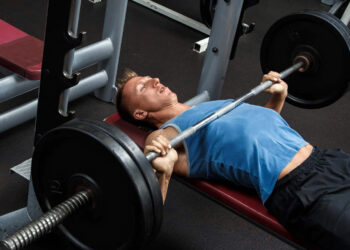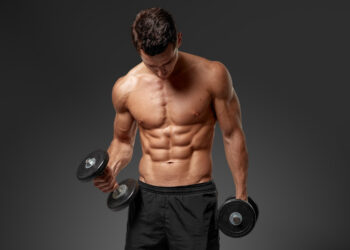Ask anyone who trains what the best tools for building muscle and strength are, and they’ll probably tell you it’s barbells, dumbbells, and resistance training machines. A few may mention kettlebells and even bodyweight calisthenic exercises. You might also hear that suspension training devices like TRXs and even resistance bands can help you build muscle and might.
But, one of the answers you probably won’t get is weighted sleds. After all, using a sled to build muscle would be like trying to use an exercise bike or a treadmill, right? Totally incompatible!
Before you put sleds on the “won’t build muscle” pile next to the Shake Weights and Thigh Masters, you should probably think again.
You definitely CAN build muscle and strength with a weighted sled, but you’ll need to use it for more the standard dragging and pushing exercises that most people use them for.
Intrigued? Then keep reading!
What is a weighted sled?
Before we get into how to use a weighted sled for building strength and muscle, let’s make sure we are all talking about the same thing.
Level Up Your Fitness: Join our 💪 strong community in Fitness Volt Newsletter. Get daily inspiration, expert-backed workouts, nutrition tips, the latest in strength sports, and the support you need to reach your goals. Subscribe for free!
Weighted sleds come in a range of shapes and styles, but irrespective of design, they all work the same way. They are usually made of metal, can be loaded with standard weight plates, and are meant to be dragged or pushed across the ground.
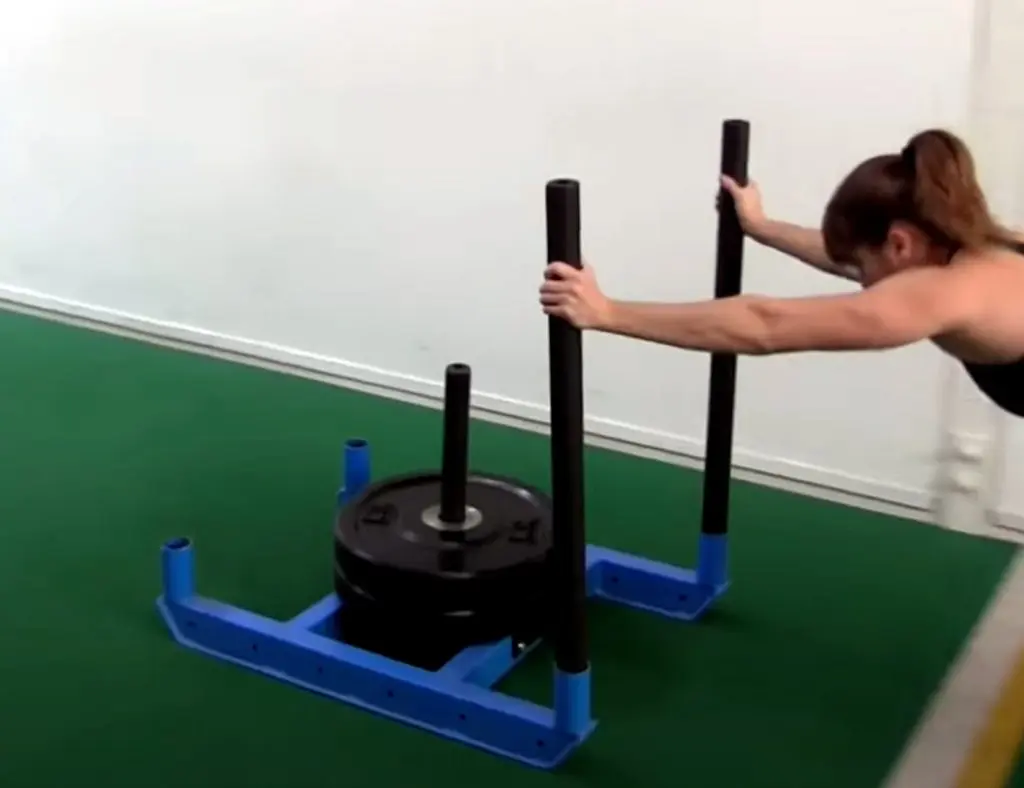
Metal sleds are arguably the most versatile as they can be used inside and outside on pretty much any surface. There are also plastic and even cloth sleds that are designed exclusively for indoor use. Some enterprising people even make their own sleds out of wood.
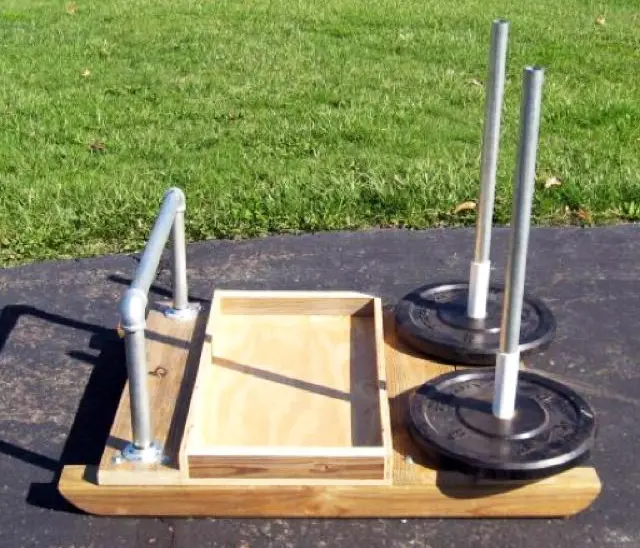
Most sleds have a slightly upturned edge, so they won’t catch on debris or dig into the ground. The base plate is usually smooth so that they slide relatively easily. Of course, the more weight you load into a sled, the harder it will be to move. Sleds can accommodate a lot of weight and have vertical loading pins, to help keep the weight plates secure.
Where all sleds can be pulled using straps, some have handles so they can be pushed too. These handles are usually adjustable and often removable to provide plenty of pushing and pulling options.
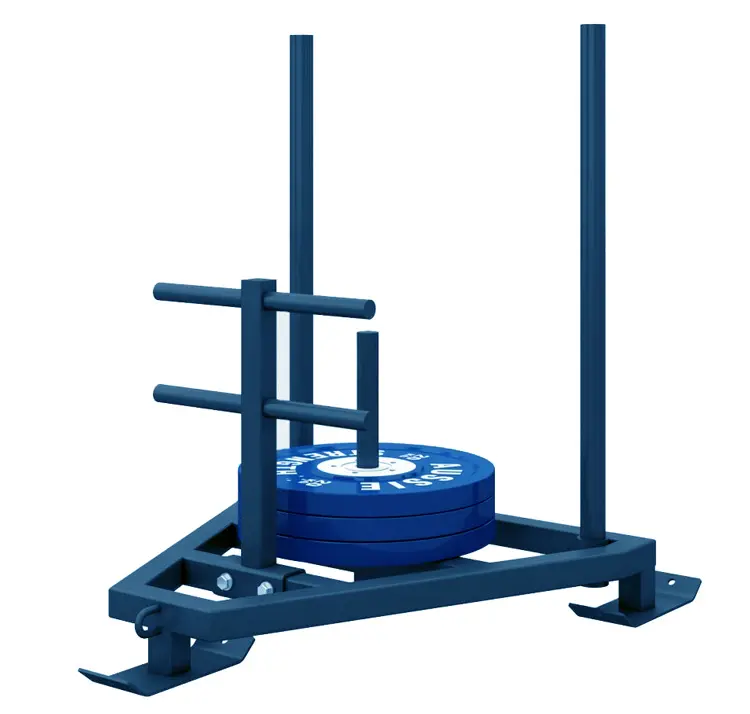
The good news is you can use all types of sleds to build muscle and strength, even the most basic pulling sled. All you’ll need is a couple of webbing straps and some D-shaped handles, like those you find on a cable crossover machine.
Why use a weighted sled for strength training?
If it ain’t broke, don’t fix it is a saying that can often be used in strength training. Traditional training methods like barbells and dumbbells work, so why use anything different?
While these more usual training methods undoubtedly produce results, it’s always useful to have similarly beneficial alternatives. You never know when your current workout will stop working, and your gains dry up, leaving you looking for a new way to work out and continue making progress.
The benefits of sled training for strength and muscle size include:
No eccentric phase
Most exercises have a concentric or lifting phase and a lowering or eccentric phase. Together, this is called an isotonic contraction, iso meaning equal and tonic referring to movement or energy. Sled strength training is something of a workout anomaly because it’s almost purely concentric.
The eccentric phase of any exercise is the part responsible for the most muscle damage and, as such, is also thought to be the trigger for DOMS – short for delayed onset muscle soreness.
While DOMS is nothing to be afraid of, there are times when you might want to avoid it, such as before a big sporting event, because you are just recovering from an earlier DOMS-inducing workout, or you just don’t feel like getting “beat up” in the gym.
Sled strength training is much less likely to lead to DOMS. No eccentric muscle action means much less soreness.
All sled exercises are core exercises
Core is a popular term in the fitness industry and refers to the muscles that make up your midsection. Like a natural weightlifting belt, your core muscles stabilize your spine. A strong core can help increase your athletic performance and may also lower your risk of back pain and injury.
Strength sled training is all core, all the time. Every exercise you do involves your midsection. If regular core training leaves you feeling bored, this is the workout for you.
Level Up Your Fitness: Join our 💪 strong community in Fitness Volt Newsletter. Get daily inspiration, expert-backed workouts, nutrition tips, the latest in strength sports, and the support you need to reach your goals. Subscribe for free!
Burn more calories per workout
Every sled exercise is done standing. More than that, they all involve walking too. This will significantly increase your calorie expenditure, which is useful if you are trying to drop some fat while you work on your strength and muscle mass.
Easy on your joints
While we all love squats, bench presses, and deadlifts, there is no denying these exercises can be hard on your joints, especially if you train them hard, heavy, and often. Sled training is considerably easier on your knees, hips, shoulders, and elbows, which is good news if you want to train hard today, but not feel like an octogenarian tomorrow!
Real functional training
A lot of trainers misuse the term functional and use it as an excuse to do exercises that are more like circus tricks than a form of productive training. Sled workouts really are functional. They involve pulling or pushing heavy weights while you are standing and moving. Forget balancing on a stability ball doing curls with pink dumbbells; this is REAL functional training.
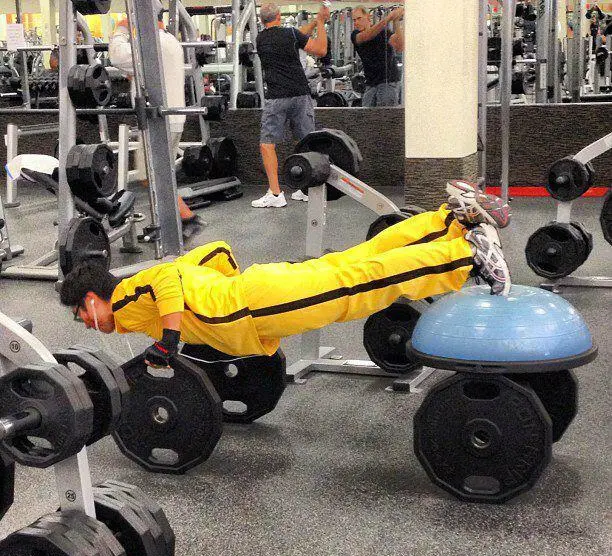
Variety
Your body is incredibly adaptable, and it adapts very quickly. Do the same workout for more than a few weeks, and it will stop producing results. That’s why we recommend you use a new split from time to time; it helps keep your workouts fresh.
But, even if you do change your workouts regularly, there are only so many different ways you can work out, especially if you rely on the same compound exercises you’ve always used.
Using a sled is very different from anything else you can do in the gym. As such, it could provide your body with the new stimulus it needs to restart your progress. Stuck in a training rut? Use a sled to get yourself out!
Train outside
Given the current health crisis, gyms may not be the healthiest, safest places to be. Using a sled outside makes social distancing a whole lot easier. Plus, you can top up your tan while you work out.
So, how DO you use a sled to build muscle and strength? That’s coming up next!
Sled Training 101
Using a sled, you can replicate almost every free weight and machine upper body exercise you can think of. There are also plenty of lower body exercises you can do too. Depending on the amount of weight you load on to your sled, you can train for muscular endurance, size, or strength, as well as the more common goals of fitness and fat loss.
With sled strength training, you perform the concentric phase of your chosen exercise as usual but, instead of lowering the weight, you take a step or two away from the sled and then repeat.
Here are a few example sled strength training exercises to try:
Sled row
This exercise works your upper back, lats, posterior deltoids, and biceps, and it basically a sled version of cable seated rows.
How to do it:
- Attach two towing straps to your sled, and a D-shaped handle to each end. Grab a handle in each hand and stand facing your sled. Walk back until your arms are straight, and the cables are tensioned.
- Squat down into an athletic stance, brace your abs, bend your arms, and pull the handles into your waist.
- Walk backward and extend your arms to return to the starting position and then repeat.
- Do this exercise with a long, single rope and pull the sled toward you as you stand still for a real test of arm, back, and grip strength.
Sled chest press
Working your pecs, anterior deltoids, triceps, and core, this exercise is an excellent alternative to dumbbell and cable chest presses.
How to do it:
- Set your sled up as described above. Stand with your back to your sled and a handle in each hand. The tow straps should run under your arms. Bring your arms up, so your hands are about level with your shoulders and close to your armpits.
- Walk forward to tension the straps.
- In a staggered or shoulder-width stance, brace your core and extend your arms to push the sled forward.
- Walk forward and bend your arms to return to your starting position. Reset your core and repeat.
Sled lateral raises
You can also use a sled to replicate cable exercises, such as cable lateral raises.
How to do it:
- Stand sideways on to your sled, and hold one handle in the hand furthest away from the load. The towing strap should cross in front of your body. Hold your arm down by your side.
- Sidestep away from the sled until the strap is tight. Brace your core.
- Lift your arm up and away from your body, pulling the sled toward you.
- Sidestep and lower your arm to return to the starting position.
Sled pull-throughs
You can’t really replicate deadlifts with a sled, but you can still work the same muscle groups. Sled pull-throughs are a very useful posterior chain exercise.
How to do it:
- Stand with your back to your sled. Grab both handles and then step over the tow straps, so they are between your legs. With your hands between your legs, hinge forward from your hips, reach back between your legs and walk forward until the straps are tight.
- Drive your hips forward and stand up, just like at the start of a kettlebell swing.
- Lean and step forward to get ready for another rep.
- Do not round your lower back when doing this exercise.
Sled backward drag
Do sore knees or back pain stop you from squatting and leg pressing? This low-impact, joint-friendly exercise is a quad-killer that won’t hurt your knees.
How to do it:
- Stand facing your sled with a handle in each hand. Bend your knees into a quarter-depth squat and walk backward until your arms are straight and the straps are tight.
- Without bending your arms, walk backward while dragging the sled. Push your heels into the floor to maximize quadriceps recruitment.
- You can also do this exercise hands-free by fixing the straps to a belt around your waist.
Sled forward drag
Facing forward as you drag your sled involves a powerful hip extension that works your glutes and hamstrings one leg at a time. This is a very back-friendly alternative to deadlifts, Romanian deadlifts, and many other posterior chain exercises.
How to do it:
- Stand with your back to your sled and hold the handles behind you.
- Brace your abs and walk forward.
- Use a waist belt or harness to free up your arms.
- You can also do this exercise in the bear crawl position with your hands on the floor.
- Turn this into a posterior chain power exercise by sprinting.
Sled training for muscle and strength wrap up
With a little imagination, you can use a sled to replicate almost any exercise you can think of. Yes, you’ll need to take your workout outside, but in return, you’ll train your body in a whole new way and, if your progress has ground to a halt recently, new is good!
We’re not saying you need to give up barbells and dumbbells for good; that would be sacrilegious. But, if you want to keep on training hard and need to find a different way to build muscle and strength, a sled is a great option.
No sled? No problem! You can do many of these exercises by tying a tow strap to an old SUV tire or a sandbag. However, while you can drag a metal sled or a tire on concrete or asphalt, you should only drag a sandbag on grass.




